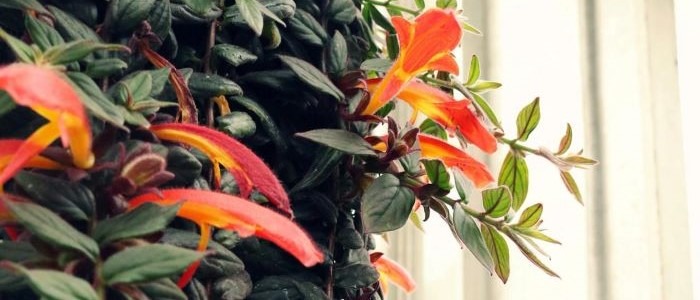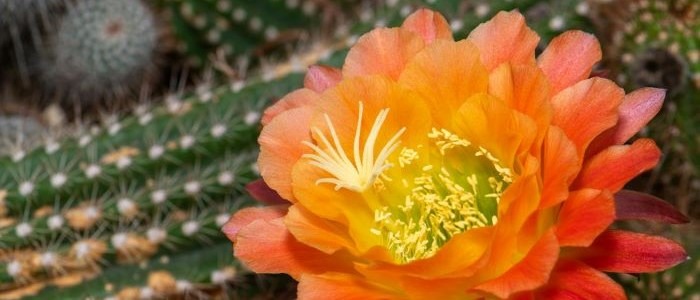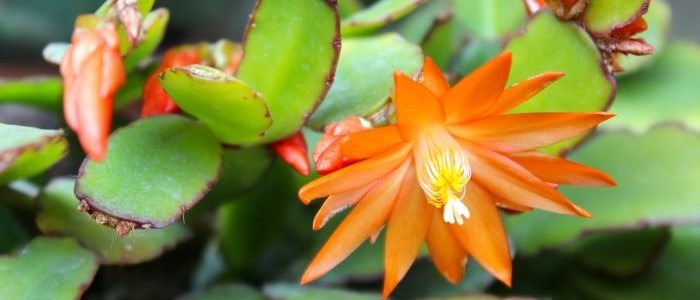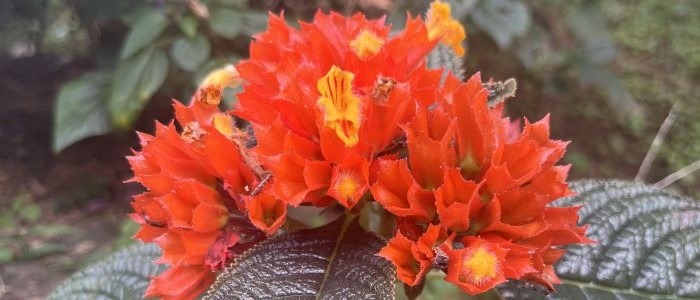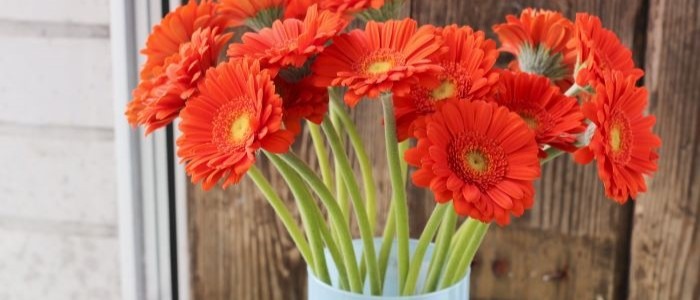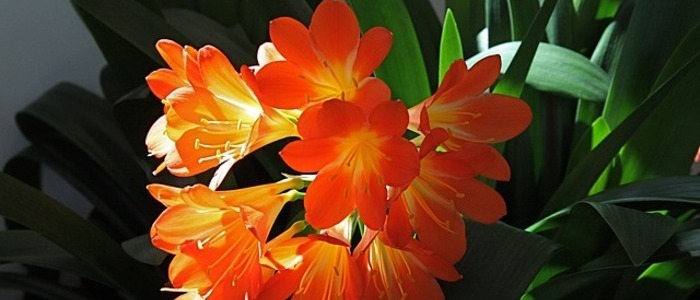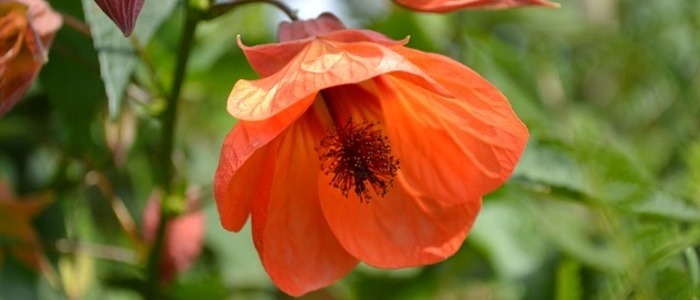Epidendrum orchids are some of the most stunning and vibrant plants you can have in your home. Belonging to the Orchidaceae family, they are native to the Americas from Mexico to Argentina. These orchids have large, thin leaves that come out of an upright stem and their blooms usually last for several weeks. Their vibrant colors range from yellow to purple and beyond, making them a great choice for any home garden.
Caring for Epidendrum orchids is essential for ensuring their health and longevity. Proper watering, fertilizing, light exposure, airflow, and more all play a role in keeping these delicate flowers healthy. The right potting medium is also important: Epidendrums prefer fast-draining soil mixes with plenty of organic material.
Another important part of caring for Epidendrum orchids is propagating them. By taking cuttings from existing plants and replanting them in new pots with fresh soil mix, you can grow your own beautiful flower gardens at home! Propagating also helps keep pests at bay; common pests that affect Epidendrums include thrips, mealybugs, scales, slugs and snails.
With proper care and maintenance, Epidendrum orchids can bring beauty and life to any home for many years to come! Knowing what type of potting mix works best for them as well as how often to water them will help ensure they stay healthy and strong over time. If you’re looking to add a splash of color with an easy-to-care-for plant that won’t take up much space in your garden – then an Epidendrum orchid might just be perfect for you!
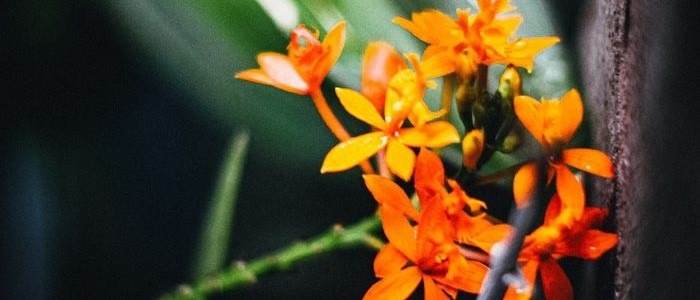
Epidendrum Orchids Frequently Asked Questions
What are the light requirements for Epidendrum orchids?
Epidendrum orchids thrive in bright, indirect light. They can tolerate some direct sunlight, but too much can cause leaf burn. Ideally, placing them near a window with filtered light or using a sheer curtain to diffuse the sunlight is best. It is important to avoid placing them in dark corners or areas with low light intensity, as this can hinder their growth and blooming potential.
How often should I water Epidendrum orchids?
Epidendrum orchids should be watered about once a week or when the top inch of the potting mix feels dry to the touch. It is important not to overwater these orchids, as they are susceptible to root rot. Additionally, it is recommended to use room-temperature or lukewarm water when watering the plants to prevent shocking the roots.
Choosing the Right Potting Medium for Epidendrum Orchids
When it comes to growing and caring for Epidendrum orchids, having the right potting medium is essential. Different types of potting mediums have different qualities that can affect the growth of your orchid, so it’s important to understand which type is best suited for them.
The ideal potting medium should be well-draining and contain a combination of organic matter such as bark chips, peat moss, coconut husks, and perlite. Having these components in the mix creates air pockets for proper aeration and gives roots enough space to grow. It’s also important to be mindful of the amount of water the potting medium can retain, as too much or too little can lead to problems.
Another factor to consider when choosing a potting medium is soil pH. Most Epidendrum orchids prefer neutral soil conditions (pH 6-7), but there are some varieties that prefer slightly acidic soils (pH 5-6). To make sure you’re getting the correct pH level for your plant, it’s recommended that you get a soil test kit from your local garden center or online store.
Aside from these factors, you also need to choose a light and airy material that will keep seeds from settling into dense areas where they won’t get enough oxygen or light. You should also avoid using any type of soil with added fertilizers or herbicides – these chemicals can harm your plant’s delicate roots over time. Finally, always remember to use clean pots with plenty of drainage holes at the bottom – stagnant water in a container can quickly destroy an Epidendrum orchid.
By selecting the right potting medium for your Epidendrum orchid and following proper care instructions, you can create beautiful flower gardens at home that will last for many years to come. With the right care and attention paid to their needs, Epidendrum Orchids can bring beauty and life into any home.
Watering and fertilizing your Epidendrum Orchids
Caring for Epidendrum orchids is an essential part of having healthy, long-lived plants. Watering and fertilizing are two key components of this care. To get the best results, water your orchid 2-3 times a week using lukewarm water and avoid overwatering or underwatering.
Additionally, fertilize with a balanced fertilizer every two weeks during the active growth period from spring to fall, then take a break during winter when the plants are dormant. Also be sure to flush out the potting mixture with water once a month to prevent salt build up from too much fertilizer application.
By following these guidelines for watering and fertilizing your Epidendrum Orchids you can help ensure that they’re always in great health and full bloom! With proper care, your Epidendrum orchid can bring beauty to any home décor for years to come!
Providing Epidendrum Orchids with Adequate Sunlight and Air Flow
Providing an Epidendrum orchid with adequate sunlight and air flow is essential for its health and growth. To ensure your orchid receives the best light, place it in a spot with bright indirect sunlight for about four to six hours per day. A south-facing window is usually the best option, but you may need to use a sheer curtain to protect it from too much direct sunlight. Additionally, make sure the area is well-ventilated with good air circulation, however avoid drafts.
To ensure even sunlight exposure, rotate the pot on a regular basis so that each side of the plant gets some amount of sun. You should also consider placing a fan near your orchid for additional air circulation as this can help prevent pests such as mites and aphids from taking hold in your orchid’s roots. If you live in a humid climate, misting your orchid with water regularly can also be beneficial as this helps create humidity around the plant which it needs to thrive.
Following these steps will provide your Epidendrum orchid with all the required elements for healthy growth and vibrant flowers for many years to come. With proper care, Epidendrum orchids are sure to bring beauty and life into any home!
Encouraging Epidendrum Orchid to Bloom and Rebloom
Encouraging Epidendrum Orchids to bloom and rebloom is a process that can be quite simple if the proper care and environment is provided. To ensure your orchid reaches its full potential, maintain temperatures of around 70°F (21°C). Direct sunlight should be avoided but bright, indirect light will help them absorb energy from the sun. If natural light is not available, grow lights, fluorescent lights, and LED lights can also prove to be successful.
Fertilizing with a balanced fertilizer such as 10-10-10 every two weeks is necessary for providing your Epidendrum orchid with all the essential nutrients it needs. Overfertilizing should be avoided as this leads to salt build up in the potting medium. Watering should only take place when the soil has dried out completely; overwatering may result in root rot which could prove fatal for your orchid.
Air flow should also be taken into consideration to promote healthy growth and flowering – this can be achieved by placing a fan near your orchid and misting it with water in humid climates. Doing so ensures that adequate oxygen is provided as well as preventing any stagnant air from settling on its leaves. With these measures in place, you’ll have vibrant blooms for many years to come!
Propagating Your Epidendrum Orchids
Propagating Epidendrum orchids is an easy way to grow more of these vibrant plants for your home or garden. It can also help you manage pests, as it reduces the chances of re-infestation. There are three main methods available for propagating Epidendrum orchids: stem cuttings, division, and back bulbs.
When taking stem cuttings, you’ll need a sharp knife and some rooting hormone powder. Choose a healthy stem that’s not too old (less than two years old) and make sure it has several nodes where the leaves will grow from. Cut off the top half of the stem at a 45-degree angle just below the second node from the top and dip it into powdered rooting hormone before planting in moist perlite or soil mix. Place your cutting in a warm area with ample indirect sunlight and mist every few days to keep the soil moist but not soggy. The cutting should take root within two to four weeks.
Division is another effective method for multiplying your Epidendrum orchid collection. Start by carefully removing your plant from its potting medium and separating out each individual section into smaller divisions, making sure that each division has at least one leaf to support photosynthesis. Replant each division into separate pots with well-draining potting medium like perlite mixed with peat moss, bark chips, coconut husks, etc., water them well, and place in bright indirect light with good air circulation so they don’t become too wet or dry too quickly.
The third propagation method is known as back bulb propagation which requires removing older growths (or ‘bulbs’) from near the base of an existing Epidendrum plant along with some young shoots that are still attached to them. Replant these bulbs in separate pots filled with moistened potting medium like perlite mixed with peat moss, bark chips coconut husks etc., water them well when you first plant them and keep them in bright indirect sunlight with good air circulation so they don’t get too wet or dry too quickly until they establish their own roots and begin to show signs of new growth which means they’ve successfully taken root!
No matter which propagation method you choose for your Epidendrum Orchids—stem cuttings, division, or back bulb—it’s important to understand their growth stages before selecting one option over another; this will help ensure successful propagation! With proper care and knowledge about how best to propagate your Epidendrum Orchids using any one of these three methods, you can enjoy vibrant colors adorning your home garden for many years to come!
Common Pest and Problems with Epidendrum Orchids
Epidendrum orchids are beautiful and vibrant plants that can add life to any home, but they require proper care in order to thrive. Unfortunately, there are some common pests and problems that may arise from time to time.
Aphids, mealybugs, scale insects, and thrips are some of the most common pests that can harm Epidendrum orchids. These pests feed on the sap from the leaves and stems of the plant, causing discoloration, wilting and stunted growth. To prevent infestations, regularly inspect your orchid for signs of these pests and remove them as soon as possible with a cotton swab dipped in rubbing alcohol.
Fungal diseases such as botrytis, fusarium, and phytophthora can also cause damage to Epidendrum orchids if left untreated. These fungi typically show up as spots on the leaves which spread quickly if not controlled with a fungicide spray. Additionally, nutrient deficiencies such as magnesium deficiency can be a problem for these plants. It is important to monitor soil pH levels closely and apply fertilizer accordingly if necessary.
Green algae and moss can also become an issue for Epidendrum orchids if they do not receive enough light or air circulation. If you notice these growths appearing on your plant’s potting mixture or leaves it is important to address them right away by increasing the light exposure and ventilation around the plant.
With proper care and attention, however, Epidendrum orchids can thrive in any home environment – even when confronted with different pests and problems! Regularly inspecting for signs of disease before it spreads is key; catching an issue early will often save your plant from further damage down the line!
Conclusion
The final thoughts section of this article will provide a succinct summary of the information presented and emphasize the importance of proper care for Epidendrum orchids. While these plants may not be the easiest to take care of, they can bring beauty and life to any home.
When caring for your Epidendrum orchid, it is important to pay attention to details such as fertilizer needs, available sunlight and airflow, and adequate watering. Repotting is also an essential step in keeping your orchid healthy and encouraging it to bloom. When problems arise, it is important to be patient and try different solutions until you find what works best for your orchid.
Above all else, readers should enjoy the beauty that their Epidendrum orchid brings into their home. These lush plants are a joy to behold with their vibrant colors and graceful petals – something that no other plant can replicate! With the right care and attention, these delicate beauties can thrive in any home environment.
Other House Plants With Orange Flowers


